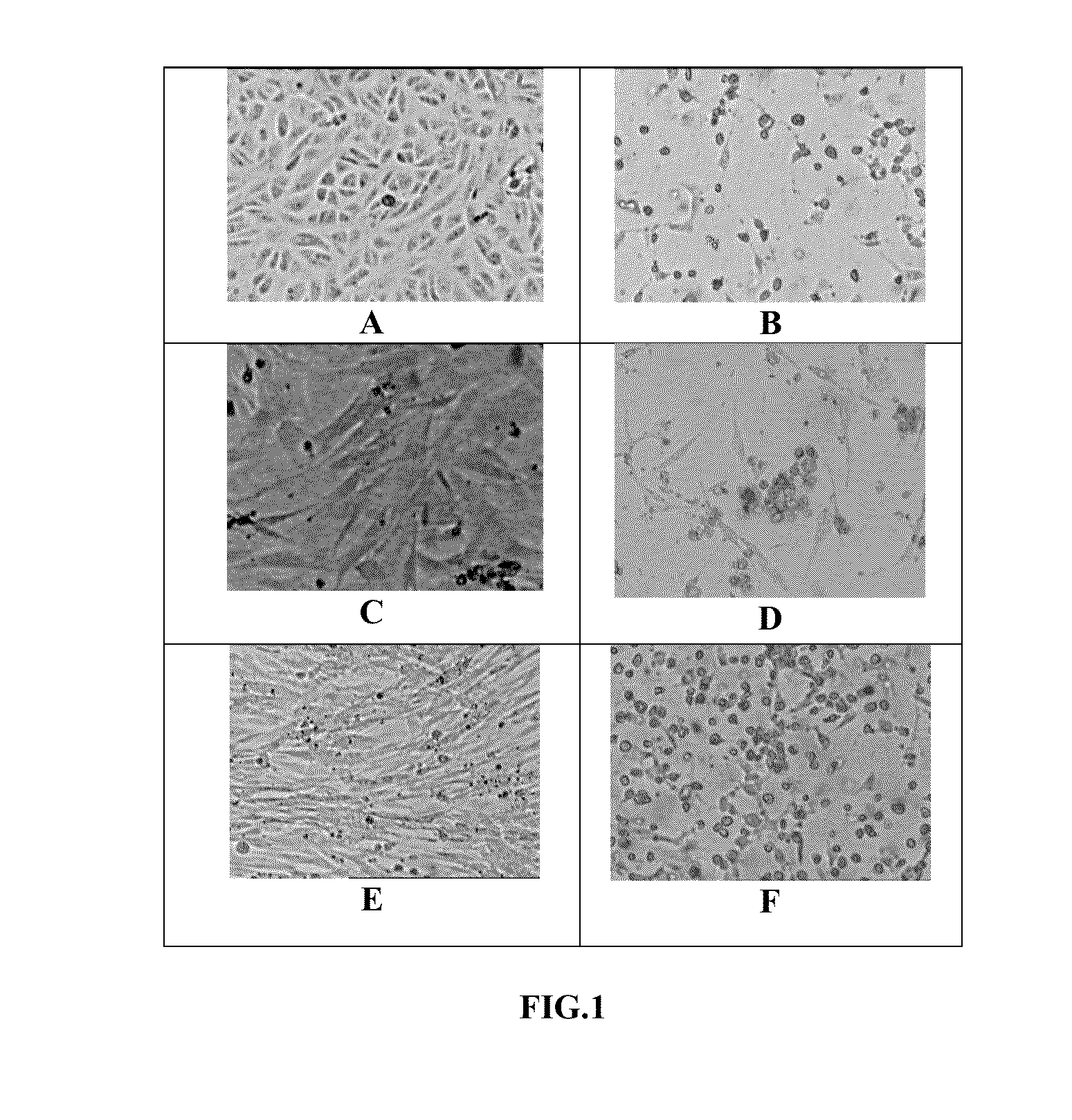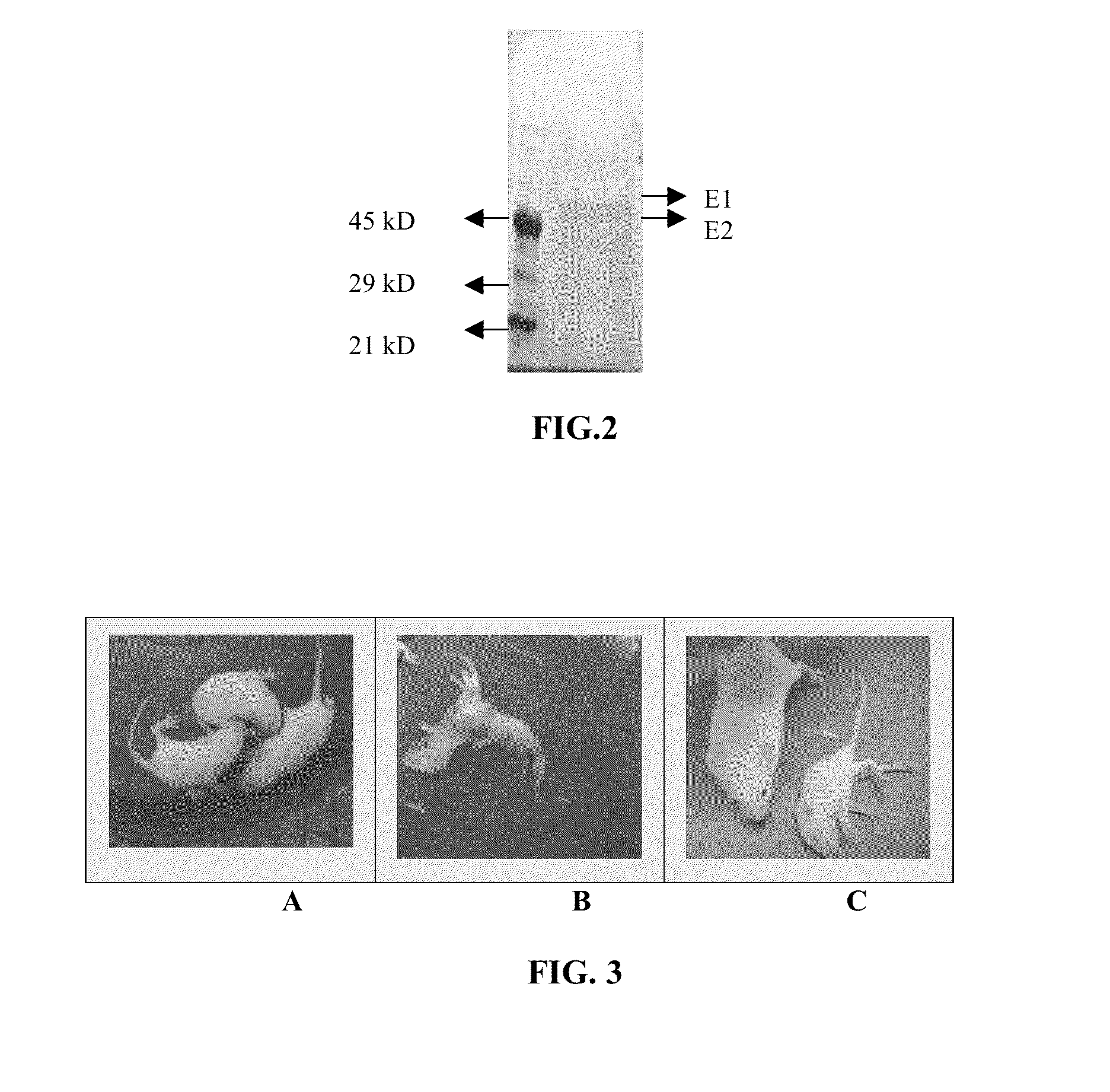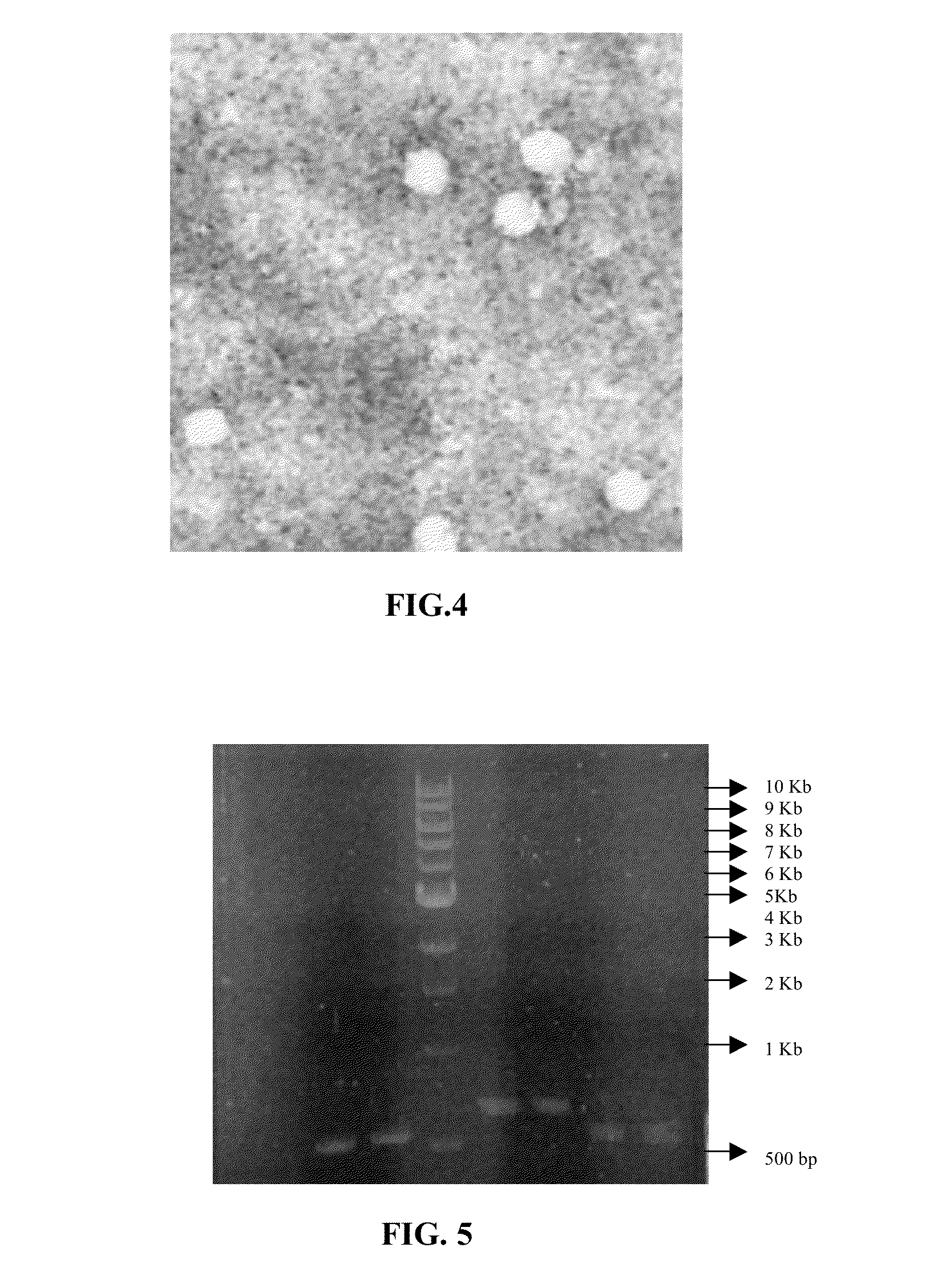Vaccine for chikungunya virus infection
a technology for chikungunya virus and vaccine, applied in the field of vaccine formulation, can solve the problems of no commercially available vaccine, rapid onset of sluggishness of animals, death, cyanosis, etc., and achieve the effect of easy validation
- Summary
- Abstract
- Description
- Claims
- Application Information
AI Technical Summary
Benefits of technology
Problems solved by technology
Method used
Image
Examples
example 1
[0064]Proliferation in a cell line for virus culture: Vero cell line (ATCC No. CCL-81), BHK-21 cells and MRC-5 cells were used as candidate cell lines for Chikungunya virus (CHIKV) culture and good viral propagation in each cell line was observed. Vero cells and BHK-21 cells were each prepared in a growth medium consisting of DMEM (Dulbecco's Modified Eagle Medium; Sigma-Aldrich Catalog #D5523 and used per the manufacturer's instructions) containing 5% fetal bovine serum (FBS). They were statically incubated at 37° C. until reaching 80-100% confluence of the monolayer. Thereafter the number of cells was counted. MRC-5 cells were prepared in growth medium consisting of MEM (Minimal Eagle's Medium) buffered to neutral pH with Hepes buffer and consisting of 5% FBS, was statically incubated at 37° C. for 6 days and thereafter the cells were counted. In an alternate procedure, Vero cells and MRC-5 cells were cultured in serum free medium. For scaling the production of cells for virus inf...
example 2
Isolation of the Virus:
[0065]Chikungunya virus (CHIKV) was isolated from serum of infected patients who had the classical clinical symptoms of Chikungunya virus infection. The Indian isolate(s) of the virus were used in the development of the vaccine formulation. Of the many isolates obtained, two isolates namely, CHK / 03 / 06 and CHK / 01 / 06 were characterized. The blood sample drawn from the patient was transported at 4° C. and the serum was separated. The serum was diluted 1:1 with phosphate buffered saline (PBS) and 0.5 ml of the diluted serum was used for infection of Vero cells (ATCC No. CCL-81) in 252 cm flask and incubated at 34° C. to 37° C. in serum free medium. The control flask of Vero cells was treated with equal volume of 1×PBS. Post-infection, the medium for propagation of Vero cells was DMEM containing 1% fetal bovine serum (FBS) In an alternate method, the cell and virus culture were carried out in serum free medium. The virus was harvested 30-48 hours after infection. T...
example 3
[0066]Propagation of the CHK / 01 / 06 and CHK / 03 / 06 virus isolates: The CHK / 01 / 06 and CHK / 03 / 06 virus isolates were propagated in continuous cell culture in Vero cells (ATCC No. CCL-81) and in BHK-21 cells and MRC-5 cells. The medium for the infection was DMEM containing 0%-1% FBS. At the end of 48 hours of infection, the cytopathic effect was near total in Vero and BHK21 cells and the virus was present largely in the extracellular medium. A TCID50 of the virus upto 109 / ml was obtained. The virus isolates were passaged serially 23 times in Vero cells and were found to be stable in continuous cell culture. The virus titer significantly enhanced after passaging through mouse brain. Virus infection and propagation were also alternately tested in a serum free medium.
PUM
| Property | Measurement | Unit |
|---|---|---|
| size | aaaaa | aaaaa |
| temperature | aaaaa | aaaaa |
| temperatures | aaaaa | aaaaa |
Abstract
Description
Claims
Application Information
 Login to View More
Login to View More - Generate Ideas
- Intellectual Property
- Life Sciences
- Materials
- Tech Scout
- Unparalleled Data Quality
- Higher Quality Content
- 60% Fewer Hallucinations
Browse by: Latest US Patents, China's latest patents, Technical Efficacy Thesaurus, Application Domain, Technology Topic, Popular Technical Reports.
© 2025 PatSnap. All rights reserved.Legal|Privacy policy|Modern Slavery Act Transparency Statement|Sitemap|About US| Contact US: help@patsnap.com



